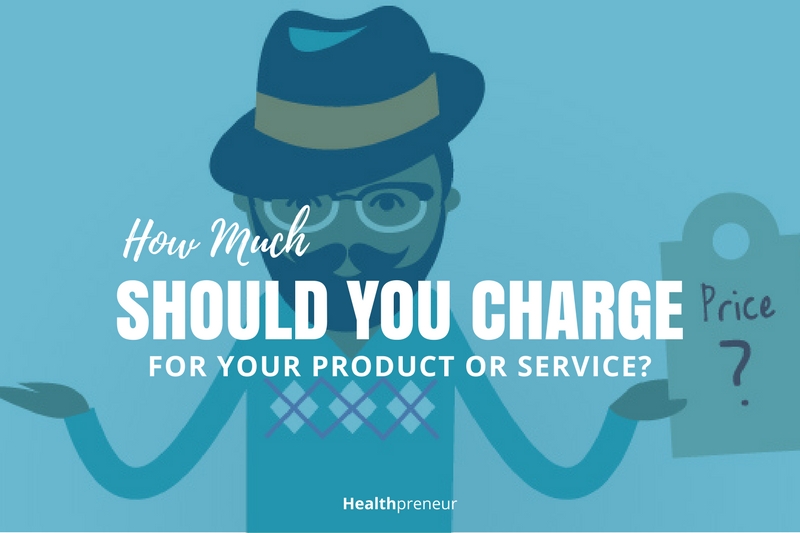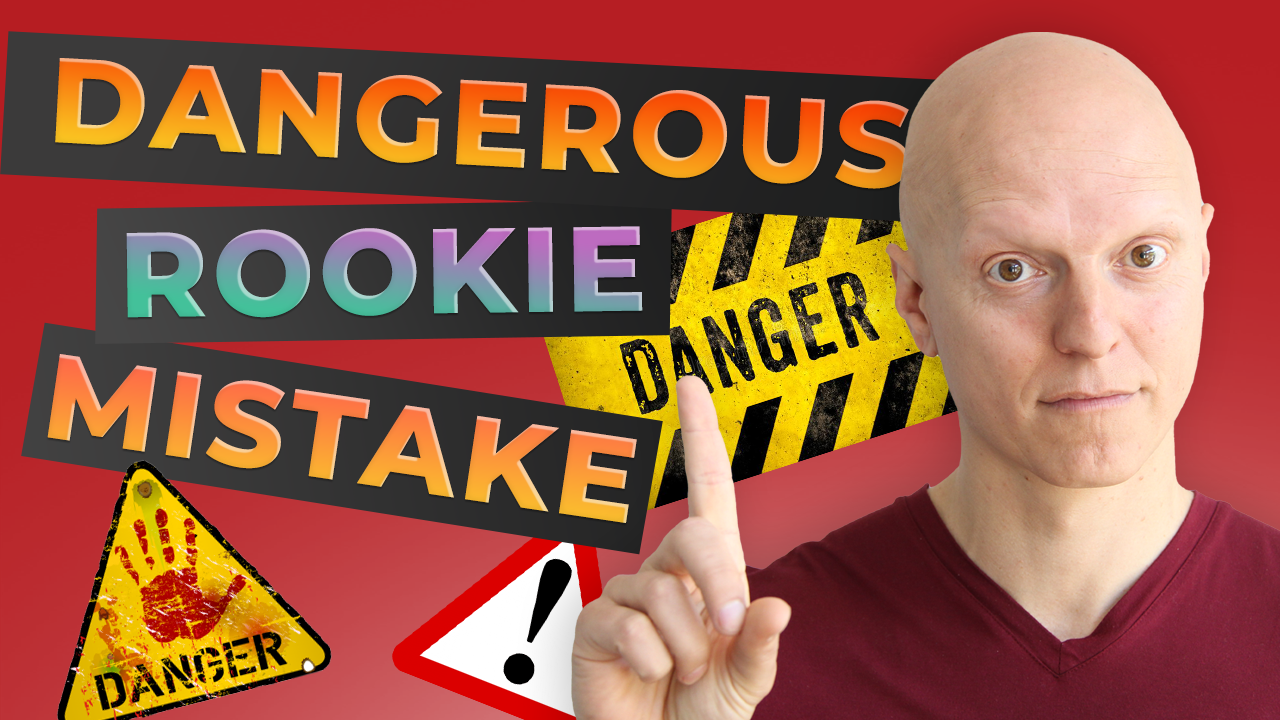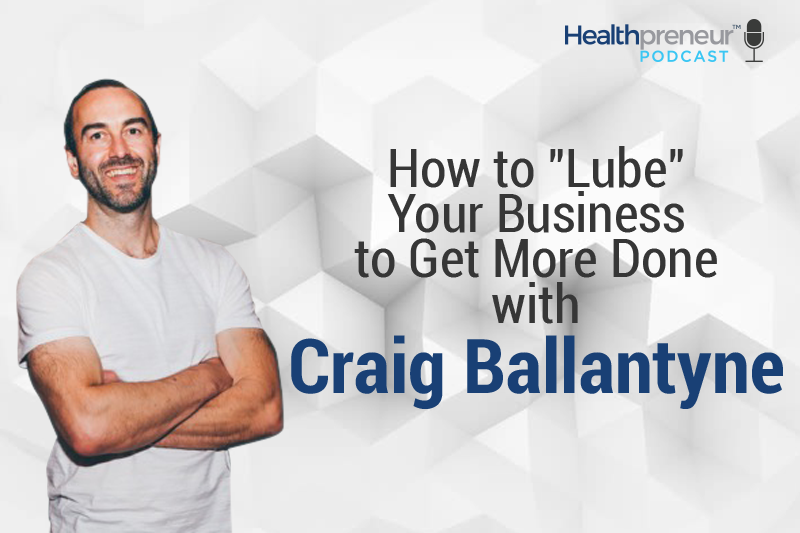How Much Should You Charge for Your Product or Service?

How much should you be charging for your product or service?
You might be surprised at what I’m going to suggest in this post. Keep reading to see what I mean.
If you prefer to watch the video version of this post, watch it below…
One of the biggest questions people have when they first go into business is how much they should charge.
And whether you’re offering personal training or selling products and services online, I’m going to offer what I think is an interesting perspective – and maybe even something that you’ve never considered before.
But first…
Let’s look at the old way of looking at pricing.
If you’ve taken an economics course, you were likely led to believe that pricing is determined by supply and demand. If there’s a low supply or a high demand, the price goes up. And if the supply exceeds demand, the price goes down.

For example, there’s only a limited amount of gold, so we have to charge a lot of money for it. But there’s a lot of wood, so it’s not as expensive.
That’s a typical economic model that’s based on scarcity.
Supply and Demand Doesn’t Apply to Us
The problem with this scenario is this:
We actually live in a world of abundance, where we can create value out of thin air.
That’s exactly what entrepreneurs do – we get ideas and then create products or services that solve problems for others.
If you’ve ever written a book, guess what? That book never existed until it became an idea in your head and you brought it to fruition.
I’ve written three published books. Those were initially ideas in my head – and now they’re real tangible things that have transformed thousands of peoples’ lives.
That’s awesome, right? That’s the beautiful thing about being an entrepreneur.
So what I want to share with you is an interesting way of looking at pricing that could apply to whatever you’re offering, whether it’s an e-book or a high-end service.
One Way to Consider Pricing
Basically, your price could be anywhere from down on the low side of the scale to all the way up at the other end, priced at the top.
One common way to figure out how much to price your product is to see what the market is willing to bear – what are people currently paying for something similar?

Here’s what some of the popular greens powders sell for on Amazon. How can you justify your pricing?
You can do some basic market research and check out your competitors are charging – say you go to Amazon and if something similar to your product goes for $20, then that’s what most people would use as the “barometer” of what they can charge.
I don’t like that model because it turns you or your product into a commodity.
Go Big, Go Low, or Go Home
I’m going to make an argument here – I think that comparing yourself to others is very poor way of deciding on price, because you end being the same as everyone else.
Remember this:
Tweet “There is no competitive advantage to being in the middle. “
You should be either the least expensive or the most expensive. And in either case you must JUSTIFY why your price is what it is. But don’t play in the middle, because that’s where everyone else is and that’s where you’ll struggle.

Don’t play in the middle because that’s where great ideas go to die.
I’ll give you a perfect example from the online fitness marketplace. Everyone is selling eBooks now for $10.
And it doesn’t matter what it is – workout, diet, blah blah blah. It’s all $10.
How are you going to make yours stand out if it’s just another one of those $10 products?
You’d have to be a very smart marketer positioning-wise, copy-wise, storytelling-wise. It’s very tough.
My friend Dean Jackson, one of the smartest marketers you’ll ever meet, says:
“It’s a lot easier to make a compelling offer than a convincing argument.”
When you’re selling products in the middle of the pack, you’re trying to make a convincing argument as opposed to a compelling offer.
Because everyone else is making the same offer and it simply doesn’t stand out as something uniquely special for your potential customer.
Kia vs. Rolls Royce
Let’s look at cars as an example.
Now, I’m not making any judgments if you own this car (Lebron James drives one!), but let’s just say on the low end we have a Kia, which is a really good car. It’s on the less expensive end of the scale price-wise. We’ll say it’s $30,000 (I think).
And at the other end of the scale we have a Rolls Royce, which sells for more than $200,000. Interestingly, it’s basically the same car as the BMW 740, but they add another $100,000 to the price simply because of the name Rolls Royce.
So, why is a Rolls Royce $200,000? Is it $170,000 more valuable than a Kia? Well that’s really in the eye of the beholder.
To continue this example, when you’re pricing products at a premium, what you’re really playing on is intrinsic and perceived value. And naturally, there will always be people who want the BEST or most expensive (of anything), even if it’s more or less the same thing as the next option.
As I mentioned, the Rolls Royce is basically the same car as the BMW 740 – but the Rolls Royce costs about $100,00 more.
Why is that? It’s the same engine, the same chassis, all that stuff. But the company Rolls Royce has said, “We are premium. We are exclusive.” And that attracts customers who feel the same way about themselves, who would rather walk than be seen driving a Kia.
Price very often appeals to our deepest desire to feel special…to feel acknowledged…to feel a “class” above others.
It’s the same reason why people fly 1st class. Sure the service and leg room are obviously better but there’s certainly an “ego” play lurking beneath the surface. Appeal to that in your potential customers – if you’re going high price.
And as much as pricing reflects how customers see themselves, how we price our own products and services reflects how we see (value) ourselves. More on that in a second.
Low-End Vs. High-End
What I’m getting at here is that you should go low or high. And justify either one.
Set yourself up in the marketplace as the Walmart or the Neiman Marcus – the Kia or the Rolls Royce.
That way, if you’re at the low end of the scale, that’s going to eliminate or “repel” the people who want the perceived higher-end product. And that’s fine if that’s the market you want to go after.
And if you want to go premium price? Guess what? A lot of people are not going to be able to afford you – and as a result you’re going to eliminate them. That’s cool as well.
Here’s something to remember:
The reason most people don’t charge more for their services or products is because of their SELF WORTH.
We can go into a whole Tony Robbins personal development séance on this topic, but if you don’t believe you are valuable or worthy, then you’re not going to charge higher prices. It’s really as simple as that.
What’s interesting is that I see people who start off in their business by charging $97 for a six-week course. But as they start getting more successes and more people going through their programs, they’re like, “Hold on. This is actually really valuable. I’m going to increase the price to $497.”
They use external successes to validate themselves or the product or service they’re offering. So they use the external successes of their clients to validate their offerings, which in turn increases their own self worth. That’s a little backwards if you ask me.
Work on Your Worth
If you become more valuable in the marketplace and truly get what you deserve then you need to do some “internal” work to grow your self worth.
All business growth starts with personal growth.
If you want to charge higher prices, work on yourself.
Work on the reasons why you don’t believe that you can charge more.
If it’s that you think you’re not good enough, that’s called imposter syndrome. Like, Who am I to charge these type of prices?” Right?
Work on yourself and the prices will take care of themselves because there’s no value in playing in the middle.
3 Great Reasons to Charge More
First of all, you tend to get better customers and fewer problems – if you’ve experienced this you know what I mean.
I’ll give you an example. When I first started my online business we offered a running program that was $14.95.
We had a lady from New York buy the program, and then she sent us an email saying that she wanted us to send her a $1.46 check for the exchange-rate difference between the Canadian and U.S. dollars.
Immediately I said, “Fire this customer.”
Because we were dealing with customers on the lower end of the price scale, we had many customers who were a pain in the butt – not all the time, but more than you would likely encounter at the higher end of the pricing spectrum.
If you go higher price you’re going to have better quality clients. People are going to be less of a pain in the butt. I’ve seen this time and time again.
The second reason that it’s actually good to increase your prices is because it’s very often the same amount of work to sell something that costs $1,000 as it is to sell a product that costs $10.
It’s the same amount of work to put into the funnel, to the messaging, to the offer, and everything else that goes into creating and selling a product.
But the third thing, and the real valuable part for you and your customer, is that it forces you to deliver immense value – much more than if it was just a $10 offer.
Let’s use an example here.
In my health business, we have a Defeating Diabetes kit. It’s a great program that helps people overcome their diabetes, and we sell it for $47. So we’re operating on the low end of the spectrum.
I’ve been challenged in the past by some of my mentors, who asked me what would have to be true to make it a $3,000 program.
Maybe that would involve me (or someone) showing up at the customer’s house and walking with them every morning. Maybe it’s going through their pantry and making their meals. Whatever it is.
But the whole idea here is that when you charge premium prices it forces you to think about how you can become infinitely more valuable to your customer.
Figure Out How to Provide MORE Value
There are always going to be people who just want to read the eBook. That’s cool, right? But maybe you don’t want to deal with those customers. Maybe you’d rather have fewer customers who are paying more money who you can actually deliver real results for.
Because we know that 90%+ of our customers are not going to take action (at least not right way). It’s human nature.
If you survey your audience, I guarantee you’ll find the same things.
“What’s the number one challenge standing in the way of your goals?”
- No motivation
- No time
- I don’t know how to get started
- (And obviously price)
What if you can offer a service that helps overcome all of those things?
If it’s at a premium price, it’s not going to be applicable to 95% of the people that are in your market, but there’s going to be 5% of the people who will be saying, “Yes! I want that, I want that personal touch. I want that high level of service. I want that person to show up at my door in the morning to drag me out of bed and get me going.”
That’s what happens when you charge higher, premium prices.
Not only do you get better customers, but you force yourself to become a better provider of services or value – which ultimately leads to better results for your customers.
Are You Worth It?
I believe you’re worth it, but you have to work on that. Don’t let pricing determine how you view yourself in the world.
Low or high, you determine where you want to price yourself, but don’t go in the middle.
This is something that we have re-evaluate in some of our own products.
In our Healthpreneur business we have some very high-level workshops that are small, intimate and exclusive, and guess what?
They’re probably not right for the vast majority of the people in the wellness and fitness space but you know what? I’m only looking for 10 to 20 of those people who are willing to invest, work with me personally and really skyrocket their business to the next level.
We have other products and services for everyone else. That’s the way I’ve decided to position our business and our products and services in this marketplace, because I know that when I can work at a higher level with a smaller number of people, that’s where I can create real change.
And again, it’s a paradigm shift. It’s a different way of looking at pricing based on a decision. It’s not market-centric, it’s literally your decision to say, “I’m going to price this 10 times higher.”
Try This Challenge
Here’s another challenge for you…
Let’s say you have clients that you serve online – you’re coaching or training clients, or the like. And right now you charge $100 per hour for talking with them for an hour on Skype.
I’m going to challenge you to add a zero to whatever it is you’re currently charging.
So now you’re charging $1,000 per hour.
How does that make you feel? Does it scare you? Excite you? Challenge you?
Well however it makes you feel, I challenge you to stay with it for a second.
Again ask yourself:
“Who do I have to become to deliver and command that type of price?”
Because it’s not about the doing… it’s about the who.
To provide the level of service at the $1,000 per hour rate, you have to become a certain person first – a person who is able to create results at that level.
So, that’s just a quick exercise to finish off with. It’s going to get you out of your comfort zone and I guarantee it will create some big breakthroughs in your business.
If you’ve enjoyed this post, then SHARE it with a fellow healthpreneur who needs to hear this important message.
Related posts
June 20, 2022
One Big Rookie Mistake You Should Avoid In Your Health Business
What’s one of the biggest rookie…
October 11, 2017
How to “Lube” Your Business to Get More Done with Craig Ballantyne
This is a special one, folks.…
April 2, 2022
Tending To Your Mind | Motivation For Healthcare Workers
Thoughts become things, so how…



